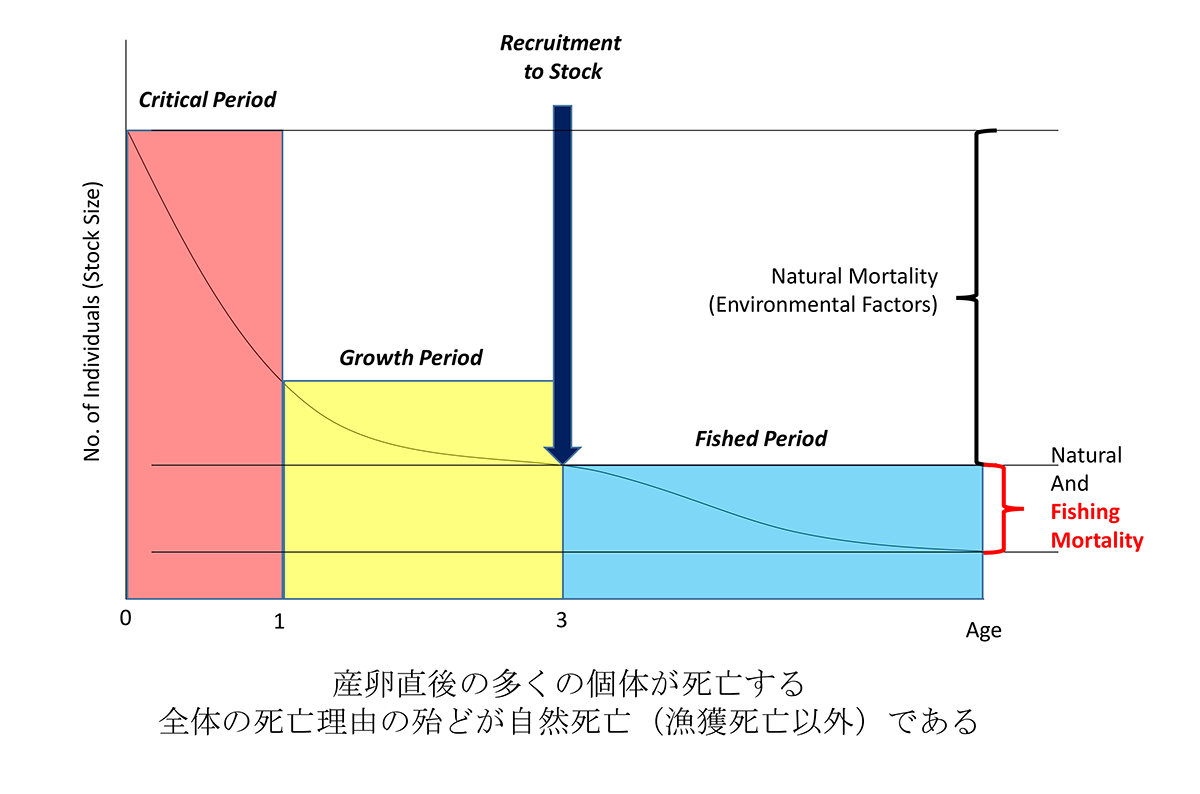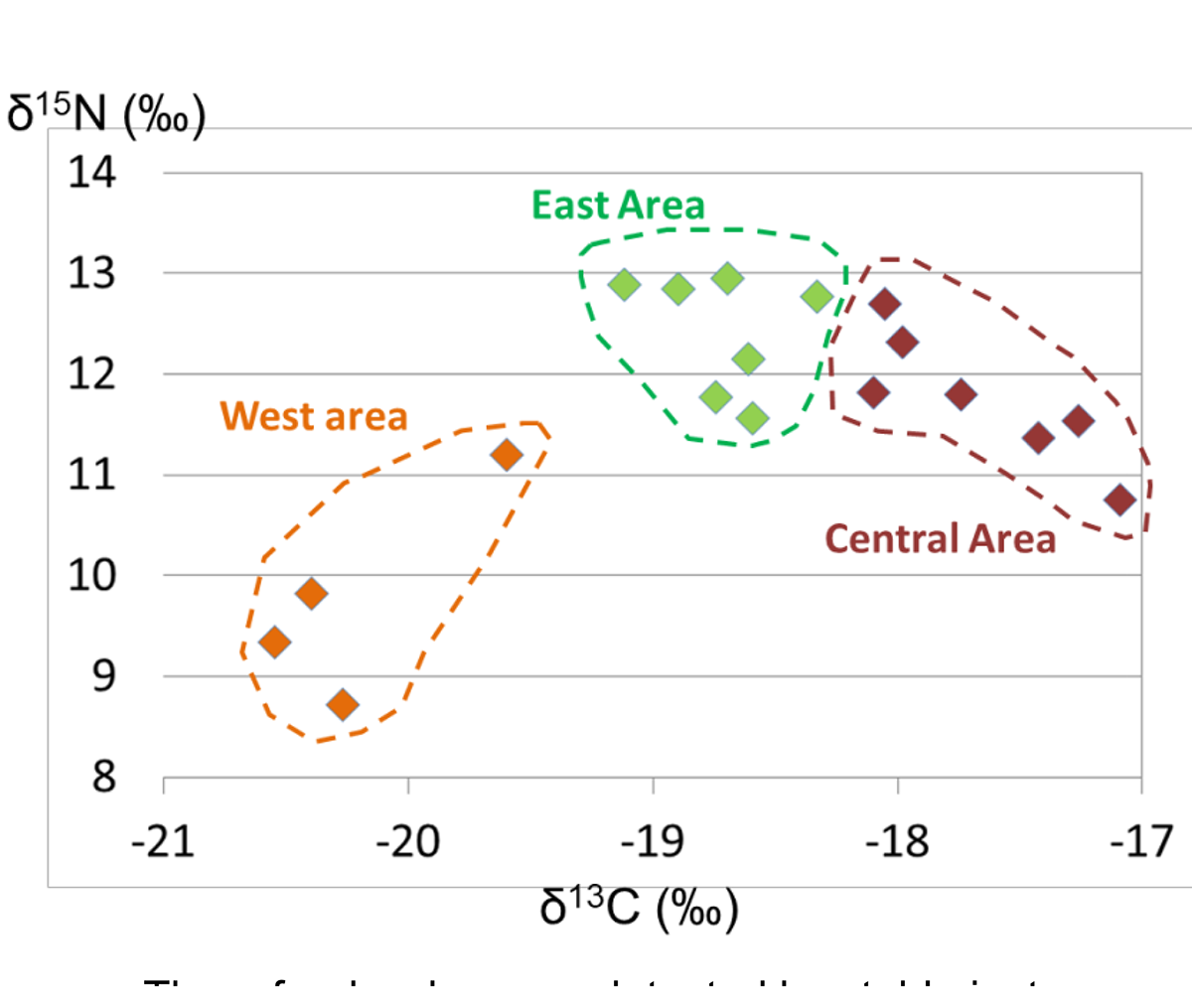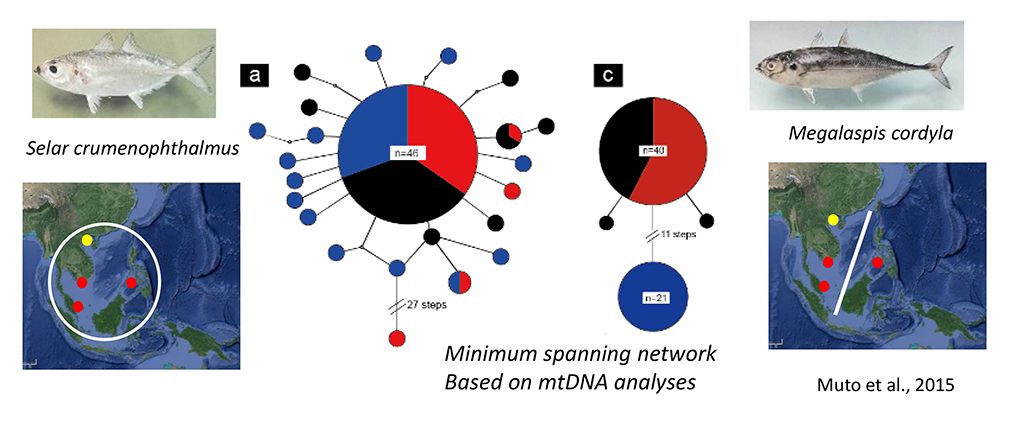Introduction
In order to establishing safe sea lanes and territorial waters and exclusive economic zones with preventing marine pollution, the importance and urgency of considering the new international order of the seas would be widely recognized in the world in both nationally and economically. Hence, I would like to discuss the current needs for sustainable use of marine ecosystem services as a common resource for humankind and the conservation of marine ecosystems that support these services, with a larger people who has much interesting on nature. I would like to focus on fishery resources that have been widely discussed not only in sea conservations but also in terms of the sustainable use of ecosystem services. So, the discussion point is on the sustainable use of marine resources assuming the premise of food shortages [1]owing to the global climate challenges, biodiversity losses and future population growth.[2]
Biodiversity conservation and marine ecosystems
The Convention on Biological Diversity was enacted in 1993 following discussions at the United Nations Conference on Environment and Development (Earth Summit) held in Rio de Janeiro in 1992. Although the degree of attention to such discussions has varied depending on social situations, biodiversity conservation has always been discussed in various forums as a global issue since the enactment of this convention. However, the Earth Summit was not the first to discuss issues regarding the extinction and decline of species. The risk of extinction of many species mainly owing to smuggling and overexploitation of animals and plants in Africa was recognized as a problem at the United Nations Conference of the Human Environment in 1972, which led to the Convention on International Trade in Endangers Species of Wild Fauna and Flora (CITES) that is also known as the Washington Convention. In addition, decreases in wetlands due to urban development, increased water use, and the accompanying decreases in waterfowl were also seen as problems, leading to the enactment of the Ramsar Convention in 1975. The importance of avoiding the extinction of wild animal and plant species through human activity seems to be widely recognized in these discussions.
Nevertheless, global conservation activities starting with CITES had spread the strong message that over catch and poaching will bring about the extinction of wild species, and for the protection of species. And the message instilled a strong image that it is indispensable to avoid the extinction to restrict usage and catch of wild resources. However, this approach has weakened interest in other aspects of habitat conservation, which are important for the protection of species. It must be said that this has been particularly unfortunate for marine organisms that adopt prolific survival strategies. The guideline for sustainable fisheries named as “Code of Conduct for Responsible Fisheries” was published by the United Nations Food and Agriculture Organization (FAO) in 1995, it showed a standard process of fishery management comprised of understanding resource amounts, estimating catchable fishery amounts, and regulating fisheries, while limited precautions were adopted with regard to environmental conservation.
A common perception currently is that overuse is the cause of decreased numbers of fish. This widespread awareness is important in facilitating consensus on resource management. However, it will be important in the future to understand that overuse is not necessarily the sole factor for reduced fish stocks. Szuwalski et al. (2015) reported no direct relationship between the stock sizes between a parent and the offspring stocks in 85% of 224 fish stocks statistics data of the world and they indicated that environmental factors would have a great influence on stock size fluctuations. Similar results have been discussed in other papers since this study, and the Fisheries Agency of Japan has also acknowledged that environmental changes (i.e., regime shifts) play a large role in changes occurring within fishery resources (https://www.jfa.maff.go.jp/j/kikaku/wpaper/h29_h/trend/1/t1_1_2_3.html). In “Science of Food Resources in the Ocean,” Ishikawa and Fushimi (2019) discussed the importance of environmental conservation and the rationale for the sustainable use of marine resources based on the relationship between environmental changes and fluctuations in the amounts of fishery resources in Tokyo Bay. They emphasized that environmental conditions of reproduction sites (spawning sites during the spawning season in the marine ecosystem) are especially important for the survival of offspring of organisms that adopt prolific survival strategies, such as numerous marine resource organisms. Besides, they highlighted these conditions are extremely important for sustainable use. This understanding of the conservation of reproduction sites must be disseminated in the future when aiming for biodiversity conservation and sustainable use of marine resources.

Fig. 1 Model of changes in the number of fishery resources over time
This consideration for the environment in the Convention on Biological Diversity is thought to be much more conscious than previous conventions, owing to the inclusion of the “conservation of ecosystem diversity”. The Convention on Biological Diversity states that three types of diversity should be considered for protection. In addition to the widely acknowledged species diversity (decreased number of species = extinct species), these include genetic diversity (which creates individual differences within species) and ecosystem diversity (in the form of species habitats, including reproductive sites). The emphasis on such considerations for genetic and ecosystem diversity provides an extremely important perspective in terms of biodiversity conservation; however, it has also been acknowledged as a major obstacle to the implementation of countermeasures. Genetic diversity is based on the idea that the various regional populations existing within a species should also be preserved based on their uniqueness and independence. However, there is also the aspect that this has become the source of problems regarding the access to genetic resources and benefit sharing (ABS) under the Convention on Biological Diversity states, and the discussion has begun to shift from conservation to profit sharing.
Fig.2 Plot of stable nitrogen and carbon isotope ratios of Siganus javus

The conservation of ecosystems (particularly marine ecosystems) is mostly constrained by scientific knowledge, and although conceptually understood, it has become extremely difficult to manage stakeholders when conducting conservation activities. In other words, there are many cases where the distribution range of each species is unknown, or cases where the cooperation of multiple regions or nations is essential owing to widespread migration. International and/or regional organizations have been formed for commercial fishery target species (e.g., tuna and salmon) and marine organisms with active conservation activities, and there are cases where the accumulation and analysis of scientific data have been conducted. However, such organizations do not exist for many marine organisms, and there is very little academic research on these organisms (several studies have been conducted but they are limited in their scope and are not necessarily utilized for conservation). Recent advances in analytical technology can show details separation of populations and food webs in one species than those observed to date, and further research on marine ecosystems will be needed from this point onwards as well. Using stable isotope ratio analysis, Okamoto et al. (2016) conducted population-level genetic analysis and food web analysis of the rabbitfish Siganus javus in Bandon Bay, southern Thailand. Their results showed that individuals of this species that live in the bay were genetically a single population, but were divided into three groups in terms of their material flows. Hence, stakeholders will differ depending on the area being targeted for management and/or conservation. It will be necessary to check the genetic population structure and the food web based on the material flows in advance to the consideration of management strategies.
In the case of marine organisms whose distribution and migration are usually invisible, it is more difficult to grasp them than terrestrial organisms, and it cannot be said that there is sufficient scientific knowledge for the conservation of biodiversity. The spawning sites and seasons are also unknown for many organisms, and there is an urgent need for the development of a mechanism for future research development, knowledge aggregation, conservation, and sustainable use.
Determining marine ecosystems in developing countries – Using the South China Sea as an example
International negotiations have been taking place in each region in the form of international collaboration on marine organism resources, including regional committees such as the Indian Ocean Tuna Commission (IOTC) or the Western and Central Pacific Fisheries Commission (WCPFC) for tuna as well as discussions on resource use in the Sea of Okhotsk between Japan and Russia. Regarding the use of genetic resources, the Bonn Guidelines were adopted at the 6th Conference of the Parties (COP6) held in 2002 under the Convention on Biological Diversity. Here, the significance of the mechanisms of prior informed consent and the fixed standards of mutually agreed terms were clarified, and they are currently in operation. Resource evaluation and species discrimination based on scientific grounds are important in all these cases. However, the implementation of these measures remains a challenge in tropical and subtropical coastal areas such as the South China Sea owing to insufficient or deficient scientific research and knowledge.
Determining the target resource amount as well as characteristics of resources of value such as the number of spawned eggs, spawning season, and spawning site are essential for fishery regulation and fishery resource management. There is a large amount of knowledge on the primary target resources in Japan and in developed countries, but these figures and information are unknown for many target species on a global scale. Furthermore, determining the distribution range and migration routes of target resources is essential for conducting resource management; however, the current status is such that there is insufficient knowledge on basic resource structures of tropical and subtropical regions, where biodiversity is high.
Fishery statistics are prepared by the FAO for determining catches and stocks worldwide. However, in the FAO statistics, each fishery statistic data of the South and East China Seas are summed as one data of the Western Central Pacific (Major Fishing Area 71), and the resource structure within this area is not considered (http://www.fao.org/fishery/area/Area71/en). The high risk of miss species identification among three fishery important mackerel species of Rastrelliger kanagurta, R. brachysoma and R. fughni had been indicated in the FAO species identification criteria (Muto et al., 2016). Recent researches had shown the existence of the sub-populations in the torpedo scads (Megalaspis cordyla) and the lattice monocle bream (Scolopsis taenioptera) in the South China Sea, individuals distributing around the Philippine coasts and in the western part of the South China Sea (e.g., Thailand, Malaysia) belong to the genetically separated reproducible populations, respectively (Muto et al., 2015; Kakioka et al., 2017). Considering that such population differentiation within the South China Sea has occurred in these extremely common fishery target species, it is expected that many other migratory species are divided into multiple regional populations within the South China Sea, East China Sea, and Major Fishing Area 71. And the stock size fluctuation is a phenomenon happen in each population. Therefore, the sharing of scientific surveys and data, such as the determination of regional populations that have been overlooked to date, and identifying their distribution ranges is necessitated for the future sustainable use of marine resources and conservation of biodiversity in marine organisms and ecosystems.

Fig.3 Population differentiation in the South China Sea based on mtDNA analysis
Towards food security and construction of a new ocean order
The fishery resource management measures that have been introduced worldwide were originally modeled on the fishery resource management of Europe and the United States, where the number of fishery target species is limited. Resource evaluation models based on cases such as cod in Scandinavia and salmon in the United States evaluated the resource amount based on the number of catch per unit efforts and the number of towed nets, those are listed in fishery statistics. The causal relationship between fishing pressures and stock decreases is easy to clarify in such cases if a single net catches only one or a few species, because the stock sizes could be calculated based on the statistics data. Measures for restoring the stock can then be considered by reducing the amount of fishing efforts (calculated based on the number of towed nets and net size). However, the current status is such that in tropical and subtropical coasts, where biodiversity is high, a single net can catch dozens to hundreds of species at a time. In such cases, even if stocks could be evaluated for all species, most fisheries would be unable to operate if the catch was regulated based on the species with the lowest stock. Such measures are not realistic amidst increasing concerns regarding food shortages. Furthermore, many poor people live in tropical and subtropical coastal areas, and life would not be possible without fishing. There is certainly a need for the protection of endangered and depleted species from a conservation perspective; however, this needs to be conducted separately from fishery regulations. Additionally, cases, in which the population drops sharply to nearly the point of extinction, often involve destruction of habitats or spawning environments rather than that of fishery (for details, see Ishikawa and Watanabe, 2017).
A wide variety of fishing gears and methods have been developed in coastal areas with high biodiversity (including tropical and subtropical regions) in response to each environment and biota. As a result, the users and stakeholders of coastal ecosystem services have also become diverse, and sustainable food production cannot be achieved with simple stock assessments and fishery regulations. Furthermore, sustainable development of small coastal fisheries is a global issue, considering that approximately 50% of the global food supply catch is caught in small coastal fisheries (Jacquet and Pauly, 2008). However, discussions that follow scientific data become more important in regulating resource use and environmental conservation as the number of stakeholders with different concerns increase. As mentioned above, it cannot be said that the accumulation of knowledge and information sharing systems are sufficiently developed in this respect, especially in developing countries. Additionally, marine plastic waste has recently been raised as an extremely important issue for the conservation of marine ecosystems, including marine resources. Initially, the focus was on the death of seabirds due to accidental ingestion of plastic shopping bags; however, microplastics, as smaller, broken-down versions of these items, have become a major issue in discussions relating to the marine environment. Furthermore, the latest research has shown the dangers of even smaller nano-plastics being incorporated into the bodies of ordinal fishery products, which has developed into a problem related to human health.
Marine litter floats over a wide area in the ocean and affects many organisms. This problem is undoubtedly caused by humankind and can only be solved by the actions of humankind. It is also evident that global cooperation is essential to achieve any solution, given that marine litter floats across the world’s oceans. The Japanese government agreed to the “Osaka Blue Ocean Vision” at the G20 Osaka Summit held in Osaka in 2019, and they also approved the G20 Implementation Framework for Actions on Marine Plastic Litter.[3] In this framework it was stated that the establishment of research facilities for marine plastic litter as well as the sharing of data, information, and technology will be promoted. Achieving both the sustainable use of marine resources and biodiversity conservation in the future will require not only the accumulation and sharing of scientific knowledge on trash and marine ecosystems and the land-sea relationships that stakeholders with different perspectives could share, but also the establishment of forums for discussion based on this knowledge. I look forward to such developments in future.
